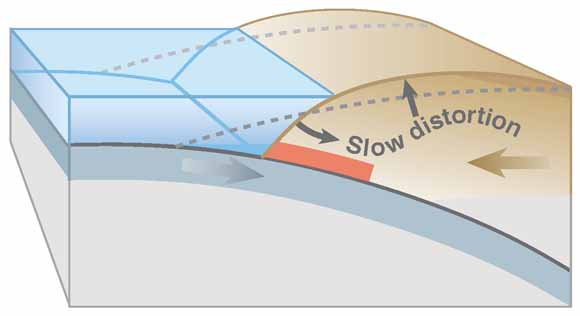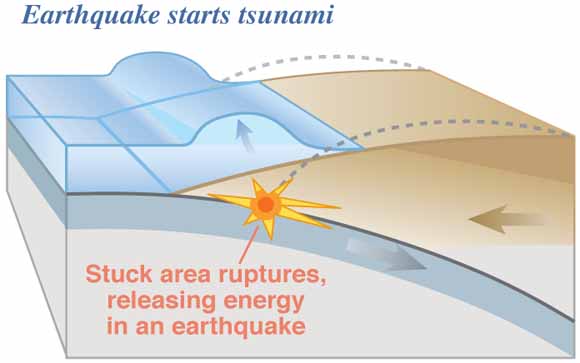I came across a very interesting article on the web – The Niihau Incident, which just occurred after the Pearl Harbour attack by the Japanese forces is about a young Japanese pilot who crashed on to the island of Niihau just after attacking Pearl Harbour.
“‘On December 7th, 1941, the Japanese bombed Pearl Harbor. Many Japanese pilots were able to return to aircraft carriers, but a few had been shot down, or had crashed on the island of Oahu. Japanese pilots were told that if they were to crash land, they should do so on the island of Ni’ihau, which they thought was uninhabited. Shigenori Nishikaichi was a pilot whose plane had been damaged. He crash landed on Ni’ihau, which he soon found out was inhabited. He was treated as a guest, but soon they found out about the attack on Pearl Harbor. 3 Japanese on the island tried to help Nishikaichi to escape, but eventually they were stopped, and Nishikaichi as well as one of the Japanese who tried to aid him were killed. This became known as the Ni’ihau incident.“
The actual story goes as…… (extracted from history.net)

” Unaware that the United States was now at war with Japan, the Niihauans treated the pilot to a luau at a nearby house. Nishikaichi even sang a Japanese song at the gathering, accompanying himself on a borrowed guitar. He was probably wondering when the rescue submarine would arrive and send a shore party to escort him aboard. He was not going to be rescued by sub, however. A submarine had indeed been in the vicinity, but at 1:30 p.m. Hawaiian time its commander had been ordered to sail on toward Oahu and intercept any incoming American relief ships.
By nightfall, word of the attack on Pearl Harbor and the other Oahu military installations had reached Niihau by radio. The pilot was questioned anew, and Yoshio Harada realized he had better accurately report what Nishikaichi had told him.
Now the problem was what to do with the enemy pilot. Aylmer Robinson, Niihau’s absentee landlord, lived on Kauai and made weekly visits to Niihau to look after family interests there. The island’s former resident superintendent, John Rennie, had died in September, and Robinson had appointed Harada paymaster in Rennie’s place. That had made Harada a man of stature on Niihau, and he was now torn between his American citizenship and his Japanese heritage. While the Niihauans debated what to do with the enemy interloper, Nishikaichi was lodged for the night at the home of John Kelly, the luau host. The Haradas stayed there with the pilot.
The next day Nishikaichi was taken by tractor to Kii Landing, near the northern tip of the island. Robinson’s boat from Kauai docked at Kii when he made his inspection visits, and he was expected to arrive on December 8. Robinson did not appear, however. Unbeknown to the Niihauans, newly imposed wartime restrictions had precluded boat traffic across the 17-mile channel between the island and Kauai.
The time spent waiting at Kii was an opportunity for Nishikaichi and Harada to converse on the beach by themselves. The pilot apparently had sensed Harada’s ambivalent loyalties, and he began to play on them. If the shaky defense of Oahu was a typical American response, he told the uncertain Harada, Japan was sure to win the war. Nishikaichi gradually won over Harada and, to some degree, Harada’s wife Irene.
On Thursday, December 11, with the pilot still being treated as a guest, albeit not a very welcome one, Harada brought the beekeeper Shintani back into the picture. The three of them conferred privately at Harada’s home, where Nishikaichi was then staying, and the following day Shintani appeared at Howard Kaleohano’s house and demanded the papers he had taken from the plane. Kaleohano refused to give them up. Shintani muttered a threat, and Kaleohano threw him out.
At that point, Harada and the pilot realized they could not count on the old beekeeper, but they were determined to proceed with Nishikaichi’s newly chosen plan for himself–death with honor. By now, the pilot was under casual guard by several Niihauans.
That same day Harada had stolen a shotgun and a pistol from the building near which the Zero had crashed–the Robinsons’ ranch house, now unused and locked. Harada had been entrusted with a key. He loaded the firearms and took them to a warehouse used to store honey from the island’s thriving beekeeping industry.
Returning home, Harada notified his wife and the pilot about the weapons he had secured. Only one of the four assigned guards was on duty at that point. When Nishikaichi asked to use the Haradas’ outhouse, Harada accompanied him outside, followed by the guard. When the pilot emerged, Harada said he had something to attend to at the nearby honey warehouse. The unsuspecting guard accompanied them there. Thereupon Harada and Nishikaichi grabbed the hidden weapons and locked the guard in the warehouse.
Just then, the guard’s wife appeared in a horse-drawn wagon. The two plotters commandeered the wagon and ordered the woman to drive them to Kaleohano’s house, where they allowed the woman to flee on the horse. When they discovered that Kaleohano was not home, the pilot and Harada made a quick trip to the nearby downed plane, which was now guarded by a 16-year-old boy. Nishikaichi tried to work the radio, but to what purpose is uncertain. The two men then forced the young guard to go back to Kaleohano’s house.
Now Kaleohano’s apparent absence was explained when he suddenly rushed from his outhouse, where he had hidden in an effort to escape the armed duo. Harada leveled the shotgun and fired at him–but missed. Being shot at settled Kaleohano’s politics, and he managed to get away from Harada and Nishikaichi. He rushed to the village and warned the residents, then borrowed a horse and headed for the northern tip of the island, intending to build a signal fire. First, however, Kaleohano stopped at his now deserted house and picked up the plane’s papers, which he took to his mother-in-law’s home.
The guard who had been locked in the warehouse was able to escape at that point and dashed to the village, where he corroborated Kaleohano’s earlier story. As a result, nearly all of the villagers fled to remote areas of the island.
A bonfire had already been set on Mount Paniau, Niihau’s highest point, by a group of alarmed men, but when Kaleohano arrived he decided that relying only on signals was too chancy. Shortly after midnight, he and five others set off in a lifeboat from Kii Landing to Waimea, on Kauai, a 10-hour pull against the wind.
Robinson, who had learned about the signal fire and was chaffing under the travel prohibition, was astounded when he received a phone call from Kaleohano in Waimea. For several days Robinson had been trying to get the commander of the Kauai Military District to send a boat to Niihau, but the Navy’s ban on all boat traffic had frustrated his efforts. Now briefed by Kaleohano on the situation, Robinson finally received approval to organize a rescue mission.
In the meantime, Nishikaichi and Harada recaptured the escaped guard and forced him to walk through the deserted village, calling on any remaining inhabitants to come out of their houses. Only one man, Kaahakila Kalima, appeared, giving the renegades their second prisoner. They then returned to the plane, stripped off the Zero’s machine guns and remaining ammunition and stowed them on a wagon. They also tried to burn the plane, but the fire they set in the cockpit did not spread. Harada sent Kalima to tell Irene that he would not be returning that night. Then he and the pilot–apparently drunk with power–walked through the now silent village firing their weapons and yelling for Kaleohano to surrender.
Once away from his captors, Kalima made for the beach, where he found his wife along with Ben Kanahele and Ben’s wife. Kanahele, 49, was a 6-foot native Hawaiian sheep rancher, noted for his prodigious strength. Kalima and Kanahele managed to avoid Nishikaichi and Harada and removed the machine-gun ammo from the wagon. But when they and their wives attempted to return to the village for food, they were captured.
After nightfall on December 12, Nishikaichi and Harada searched Kaleohano’s house for the plane’s papers, then burned it down in frustration. They then forced Ben Kanahele to search for Kaleohano. Kanahele, who knew that Kaleohano had left for Kauai, put on a show of calling for him.
Nishikaichi, now holding the shotgun and with the pistol stuck in his boot, told Kanahele that if he could not produce Kaleohano, he and all the others on the island would be shot. The placid Niihauans were normally slow to anger, but by this time the islanders had had enough. Speaking Hawaiian, Ben Kanahele demanded that Harada take away the pilot’s pistol. Harada refused, but he indicated to Nishikaichi that he needed the shotgun.
As the pilot handed over the gun, Kanahele and his wife lunged at him. Nishikaichi was too quick for them. He yanked the pistol from his boot and shot Kanahele in the chest, hip and groin. Enraged, the big Hawaiian grabbed the pilot, hoisted him in the air and threw him against a nearby stone wall. Grabbing a rock, Kanahele’s wife began to bash the fallen pilot’s head. Kanahele then drew a knife and slit Nishikaichi’s throat. Harada, no doubt realizing that he had abetted a disastrous chain of events, jammed the shotgun muzzle into his own gut and pulled the trigger.
When an Army rescue party from Kauai finally arrived the following morning, it seemed that the remarkable episode was over. But that was not the end of the story.
Ben Kanahele recovered from his wounds. In August 1945 he was awarded two presidential citations, the Medal of Merit and the Purple Heart.
For his peripheral part in the Niihau incident, Ishimatsu Shintani was taken into custody and interned on the U.S. mainland throughout the war. He blamed Japan more than the United States for his actions. With the postwar repeal of racial barriers to immigration, he became a naturalized American citizen in 1960.
Irene Harada lost not only her husband but also her freedom. Thought to be a Japanese spy, she was jailed on Kauai on December 15, 1941. She was transferred to a military prison on Oahu, where she was reportedly questioned but held her silence. Irene was released in late 1944 and returned to Niihau, embittered for life.
The actions of Shintani and the Haradas, all Niihauans of Japanese ancestry, were noted in a January 1942 Navy report as indications of the ‘likelihood that Japanese residents previously believed loyal to the United States may aid Japan.’ With the nation in an uproar over the sneak attack on Pearl Harbor, there can be no doubt that the Niihau event influenced the administration of President Franklin D. Roosevelt to summarily remove more than 100,000 persons of Japanese ancestry from the West Coast and intern them in the U.S. interior.
In Hashihama, Japan, the hometown of young pilot Shigenori Nishikaichi, there is a stone column that was erected in his honor. Chiseled in granite is a version of his exploits over Oahu that claims he died ‘in battle.’ Also engraved there are the words: ‘His meritorious deed will live forever.'”









